Pictures of the camouflaged pink Lockheed Tristar K1 at Riyadh and RIAT. I was the Flight Engineer on the first crew in Riyadh in Gulf War 1. We were joined later by a second crew, the FE was Loz Lawson. Laterly, the aircraft was modelled (company TBD) and our names as per the nose art appeared on the model. During the war, I have many anecdotes, some trivial and others quiet scary.
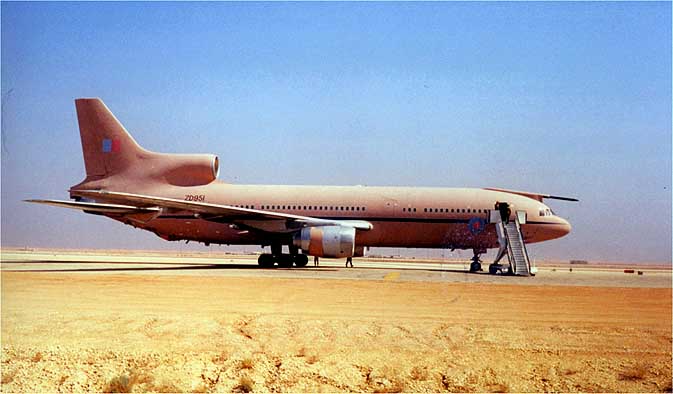


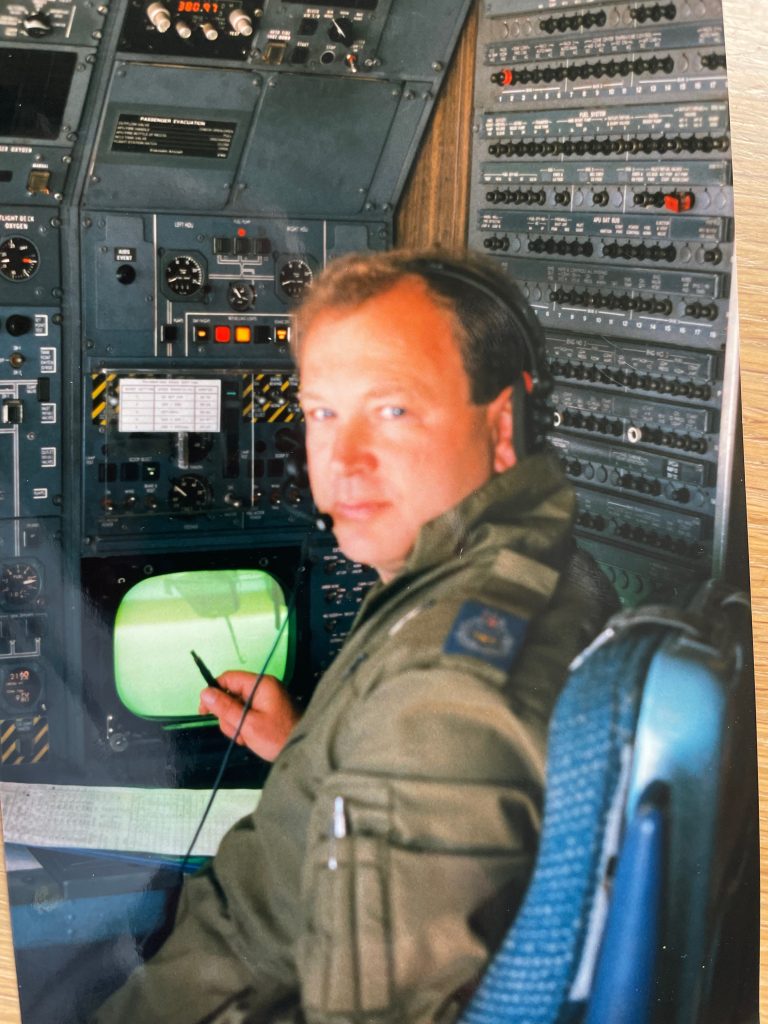

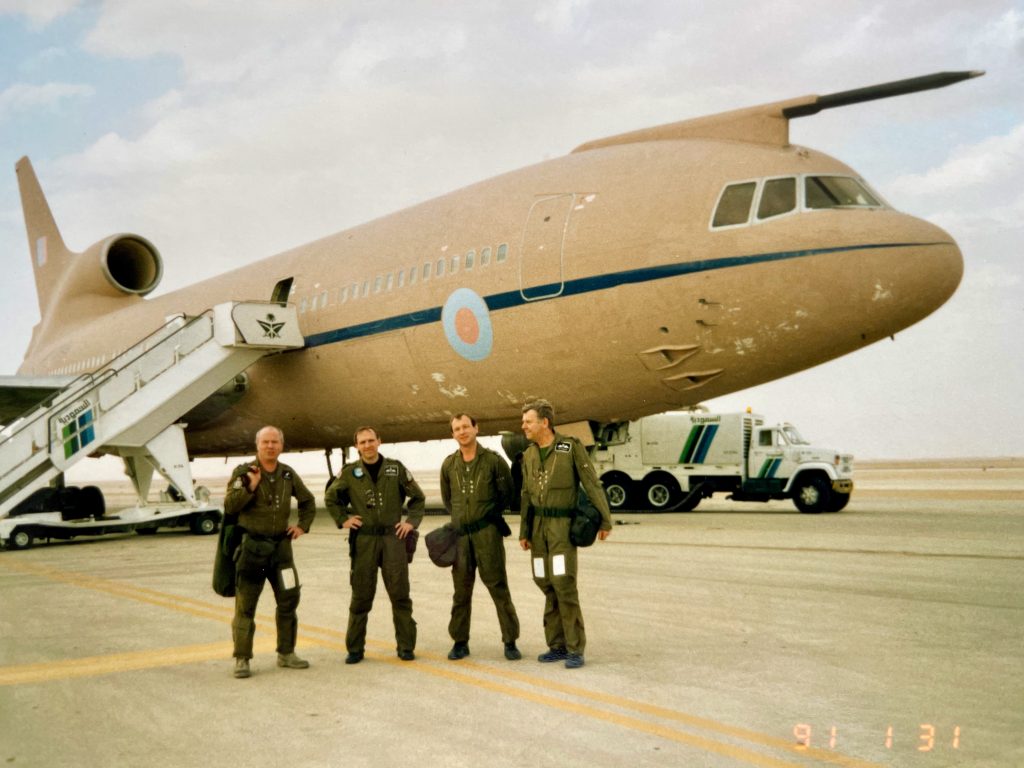

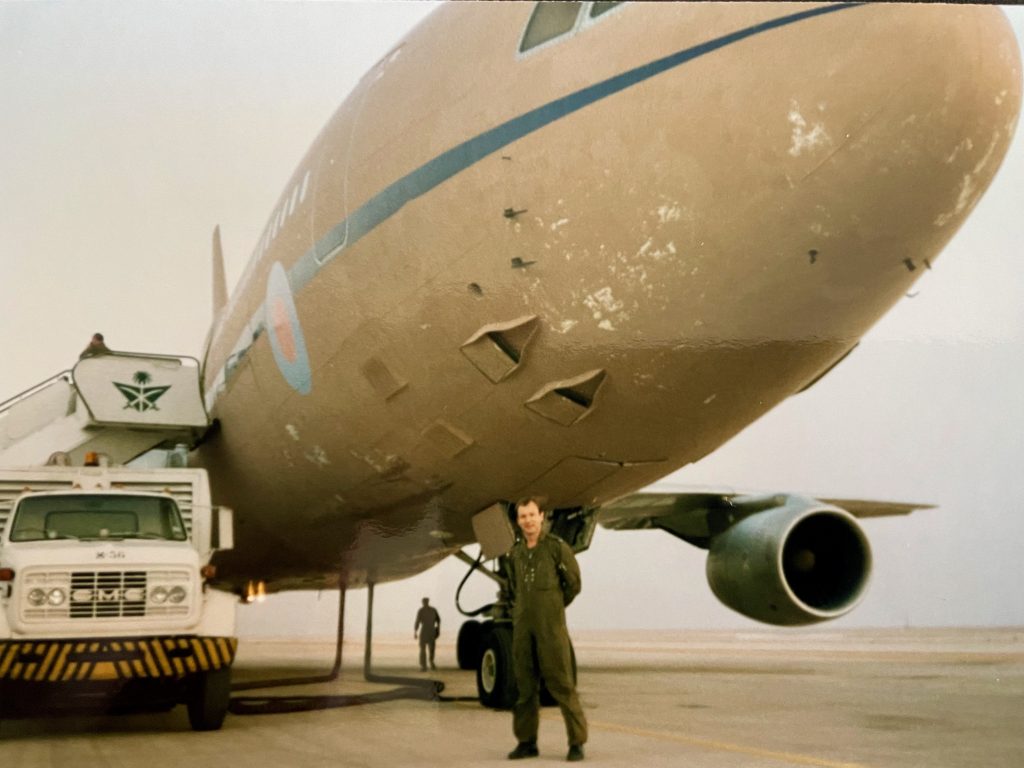
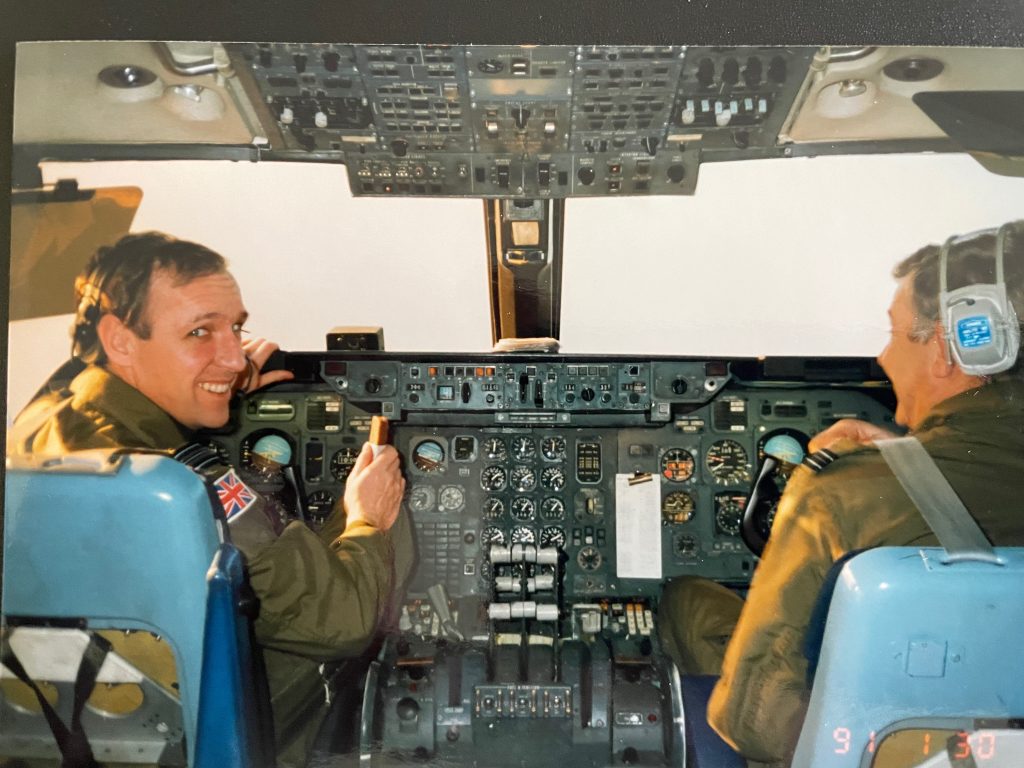
L-1011: Luxury Among the Clouds (from the Lockheed website)
In April 1972, after six grueling years of design and some unforeseen setbacks, the then-Lockheed California Company (now Lockheed Martin) delivered the most technologically advanced commercial jet of its era, the L-1011 TriStar, to its first client, Eastern Airlines.
In a similar fashion to other iconic passenger airliners before it, the L-1011 faced daunting challenges on the way to its inaugural flight. Divergent needs from competing airlines led to design challenges. Financial difficulties ravaged its engine’s manufacturer. And a recession, fueled by the world’s first oil crisis, lessened the demand for commercial airliners.
But the L-1011, like its parent company, endured the storm, including a government loan guarantee, but in the end, more than 4,500 jobs were saved. And on April 30, 1972, Eastern Airlines began scheduled service of the L-1011, with a smooth flight from Miami to New York.
On the runway, the Lockheed L-1011 TriStar was an undeniable beauty. With its large, curved nose, low-set wings, and graceful swept tail, it looked as sleek as a dolphin. But in flight, the L-1011 was nothing short of a miracle, the first commercial airliner capable of flying itself from takeoff to landing.
The Ultimate Autopilot
Conceived during the mid-1960s to transport 250 passengers on popular transcontinental routes, the L-1011 boasted unheard-of luxuries, including glare-resistant windows, full-sized hideaway closets for coats, and a below-deck galley, which lifted filet mignon and lamb chop dinners up to the main cabin via two elevators.
Passengers loved riding in it, thanks to a unique engine configuration that reduced sound in the cabin. Flight crews appreciated its extra-wide aisles and overhead bins. But it was TriStar’s pilots who had access to its most thrilling feature: an advanced fly-by-wire automatic flight control system (AFCS).
Tristar pilots simply had to dial altitude and course changes into the flight control system and monitor their instruments, and the L-1011 would fly and land on its own, descending smoothly onto the runway by locking in to an airport’s radio beacons.
On May 25, 1972, veteran test pilots Anthony LeVier and Charles Hall transported 115 crew members, employees, and reporters on a 4-hour, 13- minute flight from Palmdale, California, to Dulles Airport outside Washington, D.C., with the TriStar’s AFCS feature engaged from takeoff roll to landing. It was a groundbreaking moment: the first cross-country flight without the need for human hands on the controls. Fly-by-wire technology was here to stay.
The Legacy of the Whisper Liner
Thanks to its impressive autopilot feature, the TriStar was given special clearance by the FAA to land during severe weather conditions. Whereas other wide-bodied jets had to be diverted to alternate airports, L-1011passengers could rest assured that they would touch down precisely where they were scheduled to land.
Dubbed the Whisperliner by Eastern Airlines due to its quiet takeoffs and a noticeable lack of noise in its passenger cabin, the production of L-1011 continued until 1983. The L-1011 fleet had a remarkable in-service rate that reached 98.1 percent reliability.
But the financial troubles proved too much to overcome. A total of 250 TriStar jets were produced by Lockheed, and the L-1011 marked the company’s final commercial passenger airliners. But the company exited on a high note, having created, in one pilot’s words, “the most intelligent airliner ever to fly.”
Time elapse vide of Operation Herrick. By Pete Morgan – 216 Squadron boss. Fantastic aircraft, way ahead of its time.